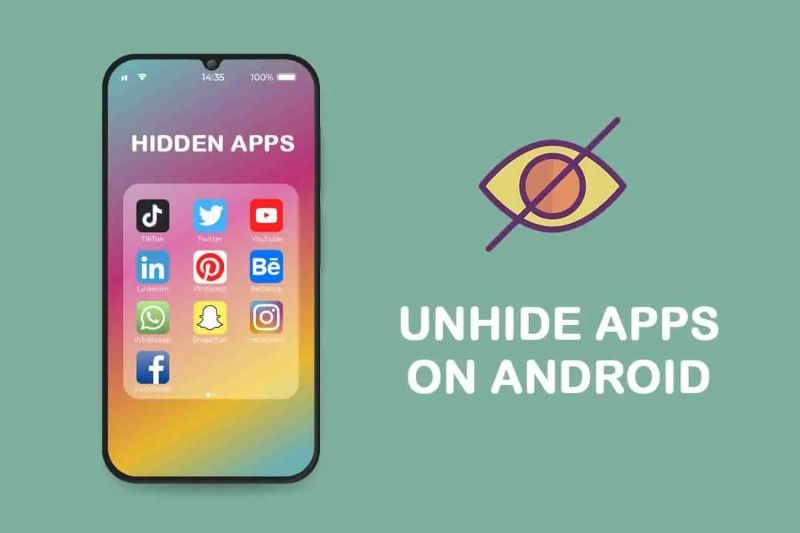

Hiding apps on Android can be useful for privacy and organization. Let's learn more about this topic below with Iron Snout. In this comprehensive guide, we'll explore various methods to conceal apps on your Android device without deleting them.
App hiding on Android is a feature that allows users to conceal certain applications from view without actually removing them from the device. This can be particularly useful for maintaining privacy or decluttering your home screen. Iron Snout, while not directly related to app hiding, serves as an interesting example of an app that some users might want to keep private.
There are several reasons why someone might want to hide apps on their Android device. Perhaps you have sensitive work-related apps that you don't want others to see, or maybe you're trying to limit distractions by hiding social media apps. Whatever the reason, Android offers various methods to achieve this goal.
It's important to note that hiding apps doesn't make them completely inaccessible. In most cases, hidden apps can still be found through the device's settings or by using the search function. The primary purpose is to keep them out of immediate view on the home screen or app drawer.
Many Android devices come with built-in options for hiding apps. These methods vary depending on the manufacturer and the version of Android you're using. Let's explore some of the most common built-in methods for hiding apps on Android devices.
One of the simplest ways to hide an app is to remove it from the home screen. This doesn't actually hide the app, but it does make it less visible. To do this, simply long-press the app icon and drag it to the "Remove" option at the top of the screen.
Some Android devices, particularly those from Samsung, offer a "Secure Folder" feature. This is a protected space where you can store apps and files that you want to keep private. To use this feature, you'll need to set it up in your device's settings.
Another built-in method available on some Android devices is the option to disable apps. While this doesn't exactly hide the app, it does prevent it from running and removes it from the app drawer. To disable an app, go to Settings > Apps, select the app you want to hide, and tap "Disable."
Some Android launchers, like Nova Launcher, offer the ability to hide apps directly. If your device supports this feature, you can usually find it in the launcher settings. Look for options like "Hide apps" or "App drawer groups" to access this functionality.
If your Android device doesn't have built-in options for hiding apps, or if you're looking for more advanced features, there are numerous third-party apps available on the Google Play Store that can help. These apps often offer additional functionality beyond simply hiding apps.
One popular app for hiding other apps is "App Hider." This application creates a secure vault where you can store and hide apps, photos, and videos. It even allows you to create a decoy password to further protect your privacy.
Another option is "Calculator Vault," which disguises itself as a calculator app but actually serves as a secret storage space for your hidden apps and files. This can be particularly useful if you want to keep your app-hiding efforts completely under wraps.
"Hide App-Hide Application Icon" is another third-party solution that allows you to hide apps and create a password-protected space for them. It also offers features like app locking and the ability to create multiple user profiles.
When using third-party apps to hide your applications, it's crucial to choose reputable options from trusted developers. Always read reviews and check permissions before installing any app, especially ones that will have access to your personal data.
For more tech-savvy users, there are advanced techniques available for hiding apps on Android. These methods often require more technical knowledge and may involve modifying your device's software.
One advanced method is using ADB (Android Debug Bridge) commands to hide apps. This requires connecting your device to a computer and using command-line instructions. While effective, this method is not recommended for beginners as it can potentially cause issues if not done correctly.
Another advanced technique is using a custom ROM or rooting your device. These methods give you more control over your Android system, allowing you to hide apps at a deeper level. However, they also come with risks, including voiding your warranty and potentially bricking your device.
Some users opt to use app cloning features to create a hidden version of an app. This allows you to have two versions of the same app on your device, one visible and one hidden. Apps like "Parallel Space" facilitate this functionality.
While hiding apps can be useful for privacy and organization, there are several important considerations to keep in mind. First and foremost, remember that hiding an app doesn't make it completely secure. Determined individuals may still be able to find hidden apps if they have access to your device.
When using third-party apps to hide other applications, be aware that you're granting these apps a significant level of access to your device. Always research the app and its developers thoroughly before installation to ensure you're not compromising your security.
Hidden apps may not receive notifications or updates as regularly as visible apps. This can be problematic for apps that require frequent updates or real-time notifications. Consider this trade-off when deciding which apps to hide.
If you're hiding apps to prevent others from accessing them, remember that a strong device password or biometric lock is often more effective. Combining app hiding with robust device security provides the best protection for your personal information.
Some hidden apps may still appear in your device's app list in the Settings menu. If you're aiming for complete privacy, you may need to use more advanced methods or third-party apps that offer deeper hiding capabilities.
Be cautious when hiding system apps or apps that are crucial for your device's functionality. Hiding or disabling these apps can sometimes lead to unexpected behavior or performance issues on your Android device.
If you're considering hiding apps for reasons other than privacy, there might be alternative solutions worth exploring. For instance, if you're trying to reduce distractions, you could use app usage tracking and limitation features built into many Android devices.
Creating separate user profiles on your Android device can be an effective way to keep certain apps private without hiding them. This is particularly useful if you share your device with others or want to separate work and personal apps.
Instead of hiding apps, you could organize them into folders on your home screen. This can help declutter your interface while still keeping apps easily accessible. You can name these folders discreetly if you're concerned about privacy.
For apps like Iron Snout that you might want to keep private, consider using app locking features. These allow you to set up a password or biometric lock for specific apps, adding an extra layer of security without hiding the app entirely.
Hiding apps on Android without deleting them is a useful skill that can enhance your privacy and help organize your device. Whether you use built-in methods, third-party apps, or advanced techniques, there are numerous ways to achieve this goal.
Remember to consider the trade-offs involved in hiding apps, such as potential impacts on notifications and updates. Always prioritize your device's security and be cautious when granting permissions to third-party app hiding solutions.
Ultimately, the best method for hiding apps will depend on your specific needs, technical comfort level, and the capabilities of your Android device. Experiment with different approaches to find the one that works best for you.
Whether you're hiding Iron Snout or any other app, the key is to balance privacy with usability. With the right approach, you can maintain a clean, organized Android interface while keeping your personal apps and data secure from prying eyes.